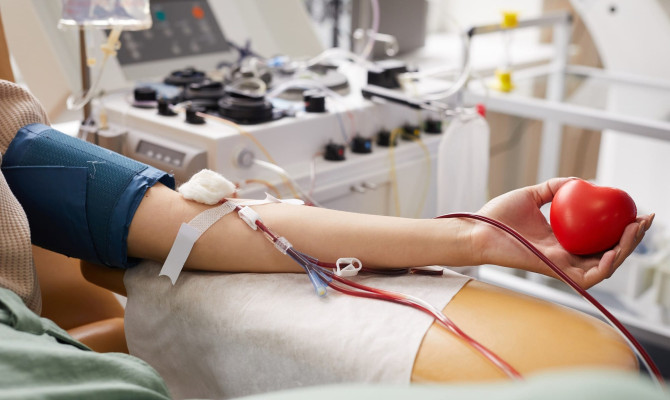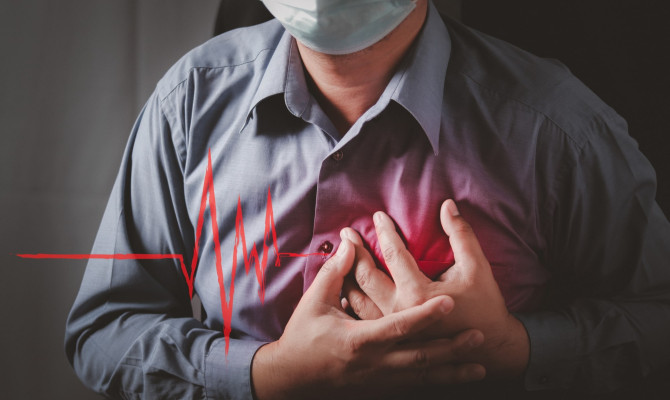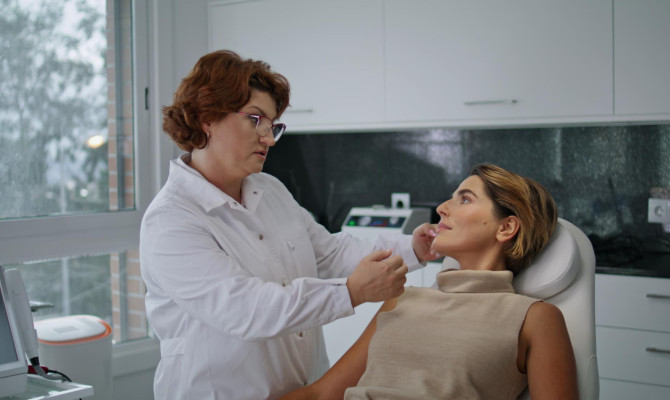Bone Cancer: A General Overview

- Bone Cancer
- 14 Aug 2023
Overview
What is Bone Cancer?
Bone cancer is a type of cancer that arises in the bones of the body. It can begin in any bone of the body, and is often found in long bones of the hands and feet. Primary bone cancer and accessory bone cancer are the two different types of bone cancer. When cancer cells from one part of the body migrate to the bones, further bone cancer occurs. Primary bone cancer starts in the bone tissue itself.
How common is bone cancer in the world?
According to The American Cancer Society, the number of newly diagnosed cases of primary cancer of the bones and joints for 2023 is expected to be around 3,970 (2,160 in men and 1,810 in women).1Overview | Researched based study from Cancer.net

Types
What are its types?
There are a few sorts of bone cancer, but the foremost common are:
Osteosarcoma
- Regularly, the foremost common shape of bone cancer, more often than not affecting children and youthful grown-ups. It often begins at the ends of the long bones of the arms or legs
Chondrosarcoma
- It is currently the foremost common sort of bone cancer. This sorting broadly starts within the cartilage cells and is more common in grown-ups than in children. It is routinely found within the pelvic bones, less frequently within the trachea, larynx, cranium.2Types | Researched based study from Macmillon.org.uk
Ewing’s sarcoma
- For the most part an uncommon frame of bone cancer that usually influences children and young people. It frequently begins within the pelvis, legs or arms.
Malignant sinusoidal histiocytoma
- More often than not an uncommon sort of bone cancer that emerges within the delicate tissues that encompass the bones.
High-grade undifferentiated pleomorphic sarcoma (UPS) of bone
- It generally happens within the middle-aged grown-ups and found once in a while in children. It includes a propensity to developed in nearby locale to begin with and after that spread too far off parts of body such as lungs.3Types | Researched based study from Cancer.org
Fibro Sarcoma of Bone
- It is most commonly found in center matured grown-ups. Most commonly influenced zones are bones of leg, arms, and jaw.
Giant cell tumor of bone
- It is most commonly found in individuals of mid 20s and 30s. It majorly influences the legs (ordinarily close the knees) or arms.
Causes
What factors contribute to bone cancer?
It is unclear what causes bone cancer.
Certain alterations in the DNA of bone cells, however, can end up causing them to become cancerous. DNA is the chemical that exists in our bodies that gives us our traits and controls how our cells function. Risk factors There are a few components that increment the chance of creating bone cancer, counting:
- Previous radiation treatment: Presentation to tall measurements of radiation increments the chance of creating bone cancer.
- Inherited hereditary conditions: Certain acquired hereditary conditions such as Li-Fraumeni disorder, innate retinoblastoma, and Paget’s malady of bone increment the chance of creating bone cancer.
- Age: Bone cancer is more common in children and youthful grown-ups than in more seasoned grown-ups.
- Gender: Osteosarcoma is more often in men, whereas chondrosarcoma is greater in women.4Causes | Researched based study from Cancer.org
Symptoms
What are the indications and symptoms of bone cancer?
Cancer of the bones is an extremely uncommon type of cancer that can grow across any bones in the body. Depending on the kind and location of the tumour, the signs and symptoms of bone cancer can change 4Symptoms | Researched based study from Cancer.org
Some typical signs and symptoms include
- Discomfort
- Edema
- Fever
- Exhaustion
- Weight loss
- Fractures
- In addition to above, pain in the affected bones that gets worse at night or after exercise.5Symptoms | Researched based study from Cancer.ca
These symptoms can also be caused by other medical conditions, but if they persist or worsen, it’s important to see your doctor for an accurate diagnosis and appropriate treatment.
Early bone cancer may not produce symptoms in some cases, causing diagnosis difficult. Therefore, regular examinations and screening tests may be recommended for people at high risk of bone cancer, for example, for people with a history of cancer, Paget’s disease or a genetic predisposition to this disease. Early detection and treatment of bone cancer can increase the chance of success.4Symptoms | Researched based study from Cancer.org
Diagnosis
Diagnosis of Bone Cancer
Early-stage bone cancer can be challenging to identify because it frequently exhibits vague symptoms like pain and swelling. But if bone cancer is suspected, a number of procedures can be carried out to corroborate the diagnosis. These include:
X-rays
- X-rays can help identify the presence of a tumour in the bone.
MRI
- The extent of the cancer can be determined via magnetic resonance imaging (MRI) scans, which can give a more thorough look of the bone and surrounding tissue. It can be used to monitor the response of the cancer to treatment, which is essential in determining the effectiveness of the treatment and making any necessary adjustments.6Diagnosis | Researched based study from Nlm.nih.gov
CT Scan
- A detailed image of the bone and surrounding tissue can also be obtained from a computed tomography (CT) scan. 7Diagnosis | Researched based study from Nlm.nih.gov
Bone biopsy
- A bone biopsy is a procedure in which a tiny sample of tissue from the afflicted bone is removed and examined under a microscope to check for the presence of cancer cells.8Diagnosis | Researched based study from Nhs.uk
Stages
Stages of Bone Cancer
Bone cancer is classified into several stages, which help to determine the extent and severity of the cancer, one of them is the TNM system. The T stage (Tumor) alludes to the primary tumor’s characteristics. It is classified into four stages: 9Stages | Researched based study from Nlm.nih.gov
- T1: The tumor is small and confined to the bone.
- T2: The tumor is larger and has spread beyond the bone to the surrounding tissues.
- T3: The tumor has grown into nearby structures, such as muscles and nerves.
- T4: This represents tumor spread to an adjacent area of the body.
Whether or not the cancer has progressed to nearby lymph nodes is indicated by the N (Nodes) stage. It is divided into different phases:9Stages | Researched based study from Nlm.nih.gov
- N0: implies that the cancer has not extended to the lymph nodes.
- N1: Lymph nodes are affected by the cancer’s spread
If the cancer has metastasized to other parts of the body, it is indicated by the M stage. It is broken down into several phases:9Stages | Researched based study from Nlm.nih.gov
- M0 : signifies that the cancer has not metastasized to other bodily parts.
- M1: The tumor has spread to the bones, liver, or other organs such the lungs.
Using the TNM approach, bone cancer is categorized into four stages,
- I being the least severe and IV being the most severe.
The cancer stage influences the proper treatment and the patient’s prognosis.9Stages | Researched based study from Nlm.nih.gov
Prevention
What are Preventive Measures?
Although there is no certain method to prevent bone cancer, specific precautions can be done to prevent complications in it which include:
- Eating a healthy meal which is high in Phytochemicals .
- Regular exercise to keep a healthy weight and promote physical health.
- Avoiding exposure to radiation whenever feasible.
- Pain management team- deals with pain, especially if it is challenging to control or severe.
Complications
What are the Complications?
The complications of bone cancer depend on the sort and organize of the cancer. A few of the common complications incorporate:
Pain
- Bone cancer can cause critical torment, especially in the event that the cancer has spread to other parts of the body.
Fractures
- Bone cancer can debilitate the bone and increment the hazard of breaks.
Nerve harm
- In case the cancer influences nerves within the influenced bone, it can cause deadness, shivering, or shortcoming.
Disability
- In a few cases, bone cancer can cause critical incapacity and misfortune of work.
Treatment

Treatment Strategies
Treatment for bone cancer depends on many components, checking the sort and organize of the cancer, the range of the cancer, and the patient’s common prosperity. A number of common treatment methods for bone cancer consolidate
Surgery
- Surgery is regularly the column of treatment for bone cancer. This incorporates removing the cancerous bone and enveloping tissue.
Radiation treatment
- Radiation treatment businesses high-energy radiation to butcher cancer cells.10Treatment| Researched based study from Radiology.info.org
Cryosurgery
- Cryosurgery employments fluid nitrogen to solidify and kill the cancer cells. This method can in some cases be utilized in put of customary surgery to crush bone tumors.11Treatment | Researched based study from Nhs.uk
Chemotherapy
- Chemotherapy is the utilize of drugs to kill the cancer cells. 11Treatment | Researched based study from Nhs.uk
Focused on treatment
- Focused on treatment includes the utilize of drugs that particularly target cancer cells.
Side effects
Side effects of treatment of bone cancer
- Nausea
- Vomiting
- Hair loss
- Fatigue
- Skin rash
- Diarrhoea
- Fever chills
- Muscle aches.
Prognosis
Prognosis of Bone cancer
The type and stage of the cancer, its location, and the patient’s general health are some of the variables that affect the prognosis for bone cancer. The prognosis is generally better the earlier cancer is discovered and treated. For localized bone cancer, the 5-year survival rate is around 70%. The prognosis is worse, though, if the cancer has migrated to other bodily regions.
Any feedback on this article?
 This Articles content was accurate
This Articles content was accurate Very Informative Article
Very Informative Article I have a question or a comment
I have a question or a comment
 This article contains inaccurate content
This article contains inaccurate content This article was not helpful
This article was not helpful I have a question or a comment
I have a question or a comment
We appreciate your helpful feedback!
Checkout our social pages
References
-
American Society of Clinical Oncology
Bone Cancer (Sarcoma of Bone) | Overview
-
Macmillan Cancer Support
Chondrosarcoma | Types
-
American Cancer Society
What Is Bone Cancer? | Types
-
American Cancer Society
What Causes Bone Cancer? | Causes | Symptoms
-
Canadian Cancer Society
Diagnosis of bone cancer | Symptoms
-
National Library of Medicines
Comparing Absorbable and Nonabsorbable Suture Materials for Repair of Achilles Tendon Rupture: A Magnetic Resonance Imaging-Based Study | Diagnosis
-
National Library of Medicines
CT Scan | Diagnosis
-
National Health Service
Diagnosis-Bone cancer
-
National Library of Medicines
TNM Classification | Stages
-
RadiologyInfo.Org
Radiation Therapy | Treatment
-
National Health Service
Bone cancer | Treatment




































